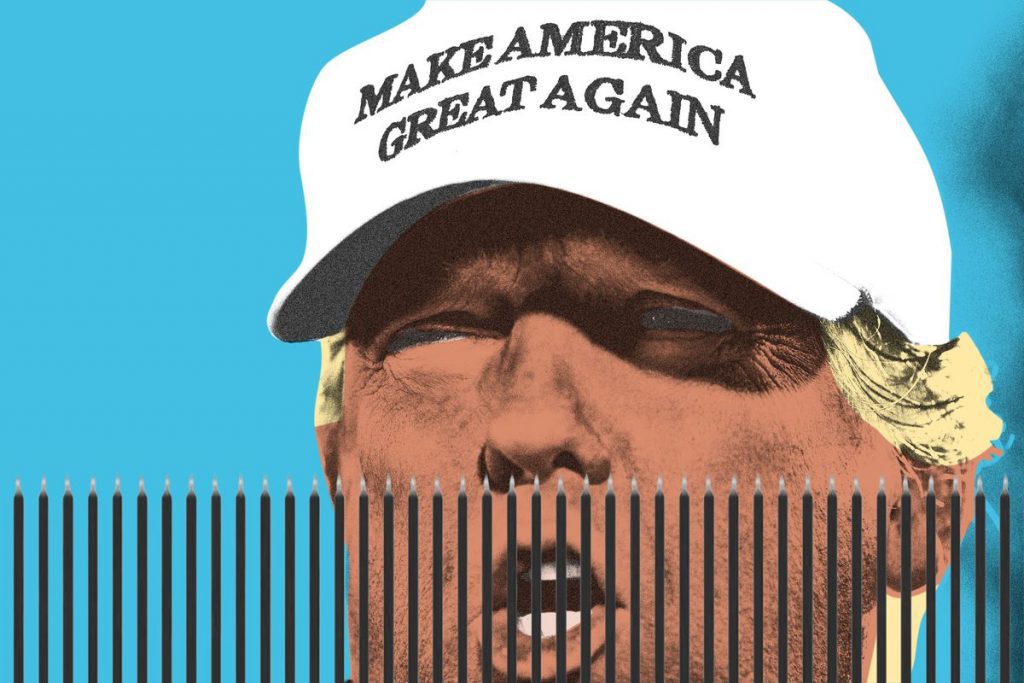
We’re going to build a wall, was probably one of the famous claims of US President Donald Trump since he launched his presidential campaign in 2016. What seemed to be a vague and futile statement, in fact, caught the attention of several Americans and media houses. The United States of America is located in central North America, between Canada and Mexico.
At 9.8 million square kilometres, it is the world’s 4th largest country by total area. While the glory and supremacy of the United States are known to all, it is the world’s largest economy by nominal GDP and approximately home to about 12 million illegal immigrants (as of 2007). Though the numbers have decreased over the years, the problem of illegal immigration has been a cause of concern throughout history. This article will particularly focus on the Mexican illegal immigrants since they are a direct party to the ‘Trump Wall.‘
Mexico, officially known as the United Mexican States, is a country in the Southern porting of North America and shares up to 3,145 kilometres of continental border with the United States of America. The strained USA-Mexico relations dates back to Mexican-American War (1846-1848) but the World War II alliance between the two rivals set path to a far more harmonious relationship. The United States of America, Canada and Mexico also signed the North American Free Trade Agreement (NAFTA) in 1944 with the goal of eliminating barriers to trade and investment.
However, what followed this was illegal immigration from Mexico and the rampant trade of illegal drugs and weapons from Mexico. A particular event which occurred on 24th of August 2012, proved to have a rather permanent dent on US-Mexican relations. A United States embassy vehicle was fired upon by Mexican Federal Police agents, causing two individuals to be wounded. This was also followed by the ATF gunwalking scandal which led the already strained US-Mexico relations to a dangerous edge.

On 8th November 2016, Donald Trump won the 58th U.S. Presidential Election with the campaign promising of building a border wall with Mexico in order to tackle the issues backed by the United States and renegotiate the NAFTA trade agreement. Known for his inflammatory and extreme comments, Trump faced controversies over his views on race and immigration; however, this did not stop him from signing an executive order in January 2017 mandating construction of the wall.
What followed this extreme measure was the Mexican President Enrique Peña Nieto cancelling his scheduled meeting to the USA and Trump stating that Mexico will pay for the construction of the wall. This was rejected by the Mexican President. In December 2018, the Federal Government was partly shut for 35 days because Donald Trump was persistent that he would veto any spending bill that did not include $5.7 billion in border wall funding.
Subsequently, in February 2019, Trump signed a declaration of National Emergency, stating that the situation at the border is a crisis requiring money allocated for other purposes to be used to build the wall. The Supreme Court of the United States of America, in July 2019 approved 2.5 billion dollars to be reallocated from the Department of Defence anti-drug funding to the construction of the wall while other legal proceedings continue. An additional of 3.6 billion dollars were diverted from the U.S. military construction projects around the world to build the ‘Trump Wall‘.
Who agrees with building the wall?
The political slogan ‘Build the Wall‘ emerged from the 2016 Presidential Campaign. The idea of building the wall became very popular among Trump supports. This can primarily be traced to the fact that immigration is regarded as a serious issue in the United States let alone illegal immigration. Most of the top tier jobs have been taken by citizens of foreign countries leaving the native American population with limited options.

In January 2017, a study conducted by the Pew Research Centre found that 39% of Americans identified the construction of a U.S.–Mexico border wall as an important goal for U.S. immigration policy. What was also observed during these studies was that older Americans particularly those without college degrees were highly in favour of the Wall. 16% of the Americans in favour of the Wall were also convinced that Mexico would pay for the construction. Those in favour were also of the assumption that people who come to live and work in the country, without official permission from the Government, are taking advantage of the country’s privileges and freedoms which is factually incorrect.
What was argued by the Trump supporters was that the human cost of illegal immigration is devastating and taxpayers shoulder the financial cost of illegal immigration and the border issue is not going to solve itself. Abraham Lincoln famously observed that a house divided against itself cannot stand. ‘Well, neither can a house without walls‘ was a statement passed by the former Governor of Arizona, Jan Brewer.
Who does not agree with building the wall?
The Executive Order of 13767 drew the citizens of the United States to fury. Some Civic Rights Organisations took to the streets in order to display their concerns and disregards with the decision taken by the Trump Government. In 2017, the survey conducted by Pew Research Centre found that 62% of Americans opposed the proposal while 43% of the respondents were of the opinion that creating a wall would not have an impact on illegal immigration. (89%) Democrats and Democratic leaners express opposition to building a wall across the entire United States-Mexico border and younger Americans and Americans with college degrees were more likely to oppose a wall.
What was pointed out by the Americans who were against the Wall was the significance of the Statue of Liberty, also known as the Immigrant’s Statue, which is seen as a representation of hope and welcome to the millions of people who immigrated to the US through New York more than a century ago. It was argued that the Wall is unlikely to stop drugs coming into the USA since the DEA stated the majority of it is smuggled in through legal ports of entry, hidden in privately-owned vehicles or transport lorries, mixed with other goods. Thereby the tedious process of creating a wall will go to vain.
Conclusion
After stating the above-mentioned facts, in my opinion, the proposal of this Trump Wall is deeply flawed and misguided. It fails to address any issues which are claimed to be taken care of by the construction of this wall, including illegal immigration, security and trade of drugs and weapons. Rather it will compromise the well-being of the American taxpayers since they will be liable for the construction of the Wall. One important point to be noted is that most of the illegal immigrants are those who have ‘overstayed‘.
The consequences of building the wall will not only be seen on the economy of the United States but also proves to be a threat to the environment which would affect the world at large. The Wall will threaten diverse landscapes, exacerbate flooding, perils to wildlife and plants, divide a river and disrupt wildlife refuges and parks. The problem of illegal immigration is not peculiar to the United States; for instance, India is estimated to have 20 million undocumented immigrants from Bangladesh alone.
Other countries with fluctuating economics are also solving these recurrent issues with a holistic approach. What seems to be an extremely harsh measure is very unlikely to solve any issues. It might act as deterrence but at what cost? Political matters of such importance which affect the lives of the people should be dealt with the utmost care and keeping the international standards and requirements in mind. While the world is calling for unity and solidarity, Trump is adamant and insisting to solve problems by literally creating a physical division. The Global Pandemic has proved that though our nationalities divide us, humanity will always unite us.
Editor’s Note
‘We are going to build a wall’ was one of the famous claims of the 45th US President Donald Trump. This wall was aimed to be constructed between the US and Mexico in order to tackle certain issues such as illegal immigration and illegal trading of drugs and weapons. This article explains the history of the US-Mexico strained relationships and the objectives behind building such a wall. The author has further put forth the views of the persons who are in support of this wall and the people who do not support the construction of the said wall. The author concludes by saying that creating a wall will not solve the issues that are claimed to be solved by it. We are divided by nationalities but united by humanity and the ongoing pandemic is the best evidence of the same.